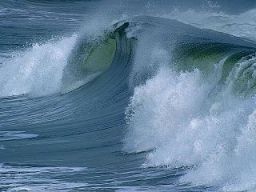|
The water in the ocean is constantly moving. On the surface we see water moving in the form of waves. Below the surface the water moves in great currents.
Ocean Waves One of the things many people love about the ocean is the waves. People love to play in the waves, surf the waves, and the sound of the waves crashing on the beach. |
 |